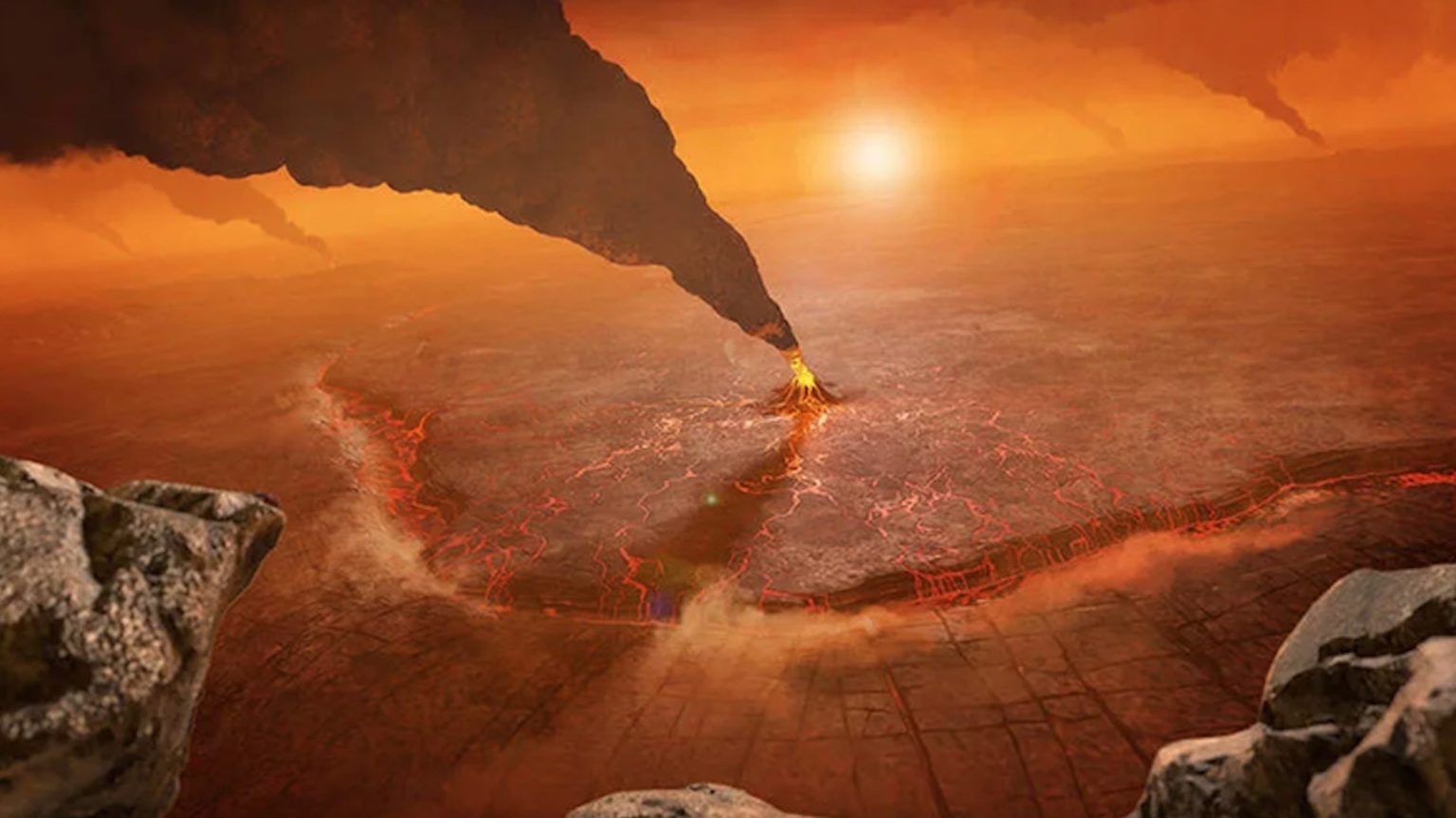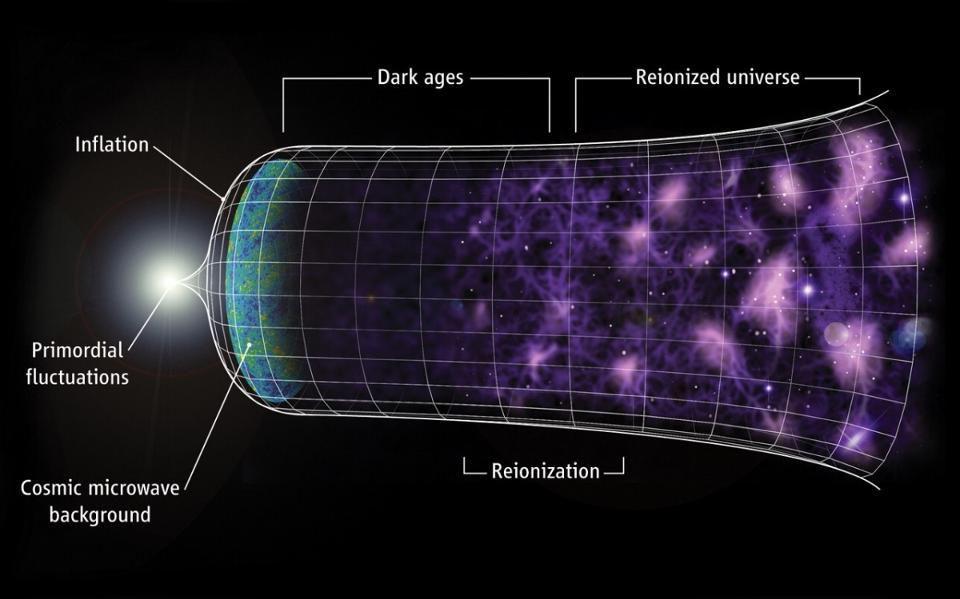Seven things you must anticipate for the 2017 solar eclipse

How to stay safe and prepare yourself for the show of a lifetime!
“Nations, like stars, are entitled to eclipse. All is well, provided the light returns and the eclipse does not become endless night. Dawn and resurrection are synonymous. The reappearance of the light is the same as the survival of the soul.” –Victor Hugo
On August 21st, 2017, the Moon will pass directly between the Sun and the Earth, creating a solar eclipse. Just like all objects in the presence of the Sun, the Moon casts a shadow in space, extending in a cone-like shape for 378,000 kilometers before coming to an end. But the Earth will be closer to the Moon than that on August 21st, when the three celestial objects — the Sun, Moon and Earth — all align, meaning that the Moon’s shadow will appear to fall on the Earth’s surface. From the point of view of someone on Earth, the Moon will appear to block out the Sun, plunging us into darkness, even during the day. This creates the phenomenon of a total solar eclipse, one of nature’s most spectacular sights, and the stuff of legend since biblical times.

But part of what makes the next eclipse to appear on Earth so special is that it’s occurring, coast-to-coast, across the continental United States. It’s the first total solar eclipse to do this since 1918, 99 years ago, and the first one to appear anywhere over any of the lower 48 states since 1979. The path of totality will cross through a whopping 14 states — Oregon, Idaho, Wyoming, Nebraska, Kansas, Iowa, Missouri, Illinois, Kentucky, Indiana, Tennessee, North Carolina, Georgia and South Carolina — where more than 12,000,000 people will get to experience totality without ever leaving their homes. But that’s just the beginning of what’s in store for this eclipse, and for eclipse-watchers everywhere in the world. Here are seven things you need to know in order to be ready for it.
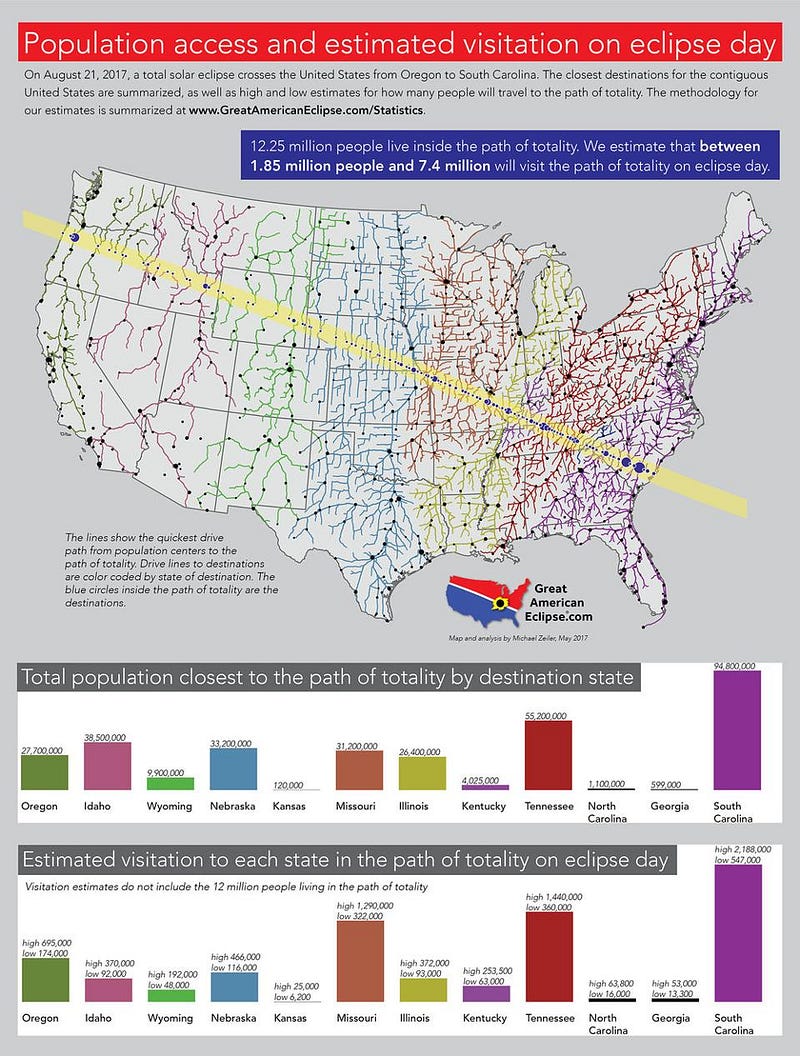
1.) This will likely turn out to be the most-watched eclipse in the history of the world. If only 2% of peopleliving within 200 miles of the path-of-totality make the trek to view the eclipse, an extra 7.4 million people will get to see it. But a number of major metropolitan areas, including:
- Portland, OR,
- Boise, ID,
- Salt Lake City, UT,
- Denver, CO,
- Lincoln, NE,
- Omaha NE,
- Kansas City, MO,
- St Louis, MO,
- Chicago, IL,
- Indianapolis, IN,
- Cincinnati, OH,
- Chattanooga, TN,
- Atlanta, GA,
- and Charlotte, NC,
all fall within that range. Additionally, some people will travel from even farther away — hundreds or even thousands of miles — to be present for this experience of a lifetime. Estimates that 20 million people will come to see this total eclipse may be far too conservative; numbers may escalate to more than double that, which would make it the most-watched eclipse of all time, surpassing the 2009 eclipse in India and China.

2.) This may create the worst traffic jam in American history. There are a number of people planning on waking up less than 24 hours before the eclipse and driving to a point along the path of totality. Over 200 million Americans live within a 500 mile drive of this path: approximately 2/3rds of everyone living within the United States. Previous eclipses have seen two hour commutes turn into twelve hour slogs, and this eclipse is poised to outdo them all. For example, Atlanta boasts 5.7 million residents, and will experience a 97% partial eclipse. Skywatchers looking for those last 3%, and yes, it’s worth it, may head north en masse to try and experience this event. With hundreds of thousands of potential extra vehicles on the road from a single city like that, alone, it’s vital that you plan ahead and arrive at your destination the day before the eclipse; otherwise you may be caught in traffic during the critical moments instead!
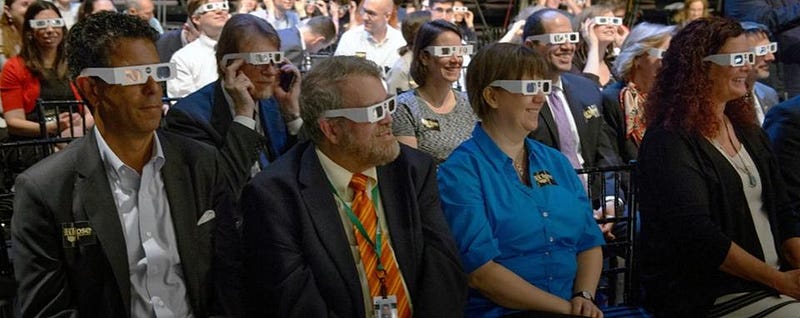
3.) You can easily damage your eyesight, permanently, during the eclipse. The only safe way to view the eclipse directly is through sufficient eye shielding, which could include:
- specialized eclipse glasses, designed explicitly for solar viewing,
- looking through welder’s glass/goggles/hoods, where you need shade 14 or higher glass to be safe,
- or through a telescope/binoculars equipped with a specialized solar filter placed over the outer lens.

The Sun will appear to be obscured by the Moon, little by little, over the course of approximately an hour. As the Sun becomes a crescent, followed by a thin line, followed by just a few points-of-light, you may be tempted to take your glasses off and look at the Sun directly. Don’t! Even a few seconds of looking at these drops of sunlight directly can leave you with years of afterimages, holes in your retina or even permanent blindness. (Libraries around the country are donating out some two million pairs of glasses, if you don’t/can’t buy your own.) Only during absolute totality is it safe to remove your glasses.
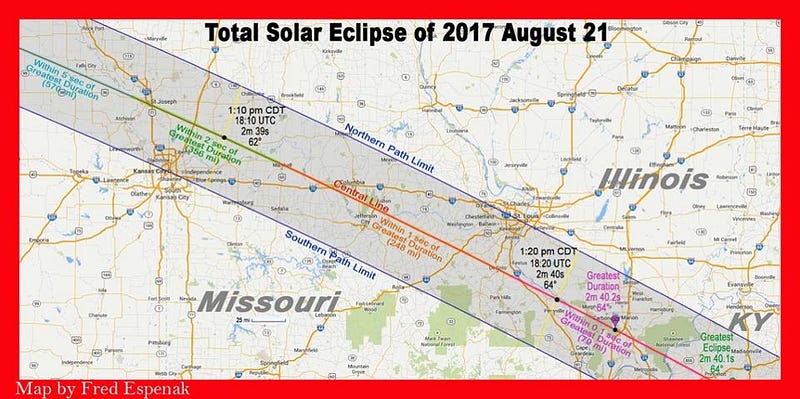
4.) Totality will only last about two minutes for most observers who make the trek. The shadow of the Moon will fall on the Earth for a combination of two reasons: the Sun is relatively far from Earth (aphelion, where Earth is farthest from the Sun, occurs on July 3) while the Moon is relatively close to Earth (perigee, where the Moon is closest to Earth, occurs on August 18th, just 3 days prior to the eclipse). Because of where the Moon is in its orbit, only 371,000 km from the center of the Earth, it appears to take up 0.537 degrees on the sky. But the Earth’s surface is curved, and so an observer in Salem, Oregon is approximately 1000 kilometers farther from the Moon than one in Carbondale, Illinois. Eclipse watchers in Illinois, Kentucky and Tennessee will get up to 2 minutes and 40 seconds of totality, while those on the Pacific coast will have just under 2 minutes. Get as close as possible to the central path to maximize your experience!

5.) Prepare for things to get chilly. When 80% of the sunlight is blocked, you won’t notice a difference in brightness, but your skin will. The Sun is so brilliant that the unaided human eye can’t tell the difference even when the Sun is 99% obscured. But sunlight reaching Earth outputs a total of approximately 700 Watts-per-square-meter in the infrared, where human skin is sensitive. By comparison, a fully overcast sky might block only about 65–70% of the heat from the Sun, something your skin will definitely notice. If you’ve never experienced it before, the lack of heat coming from the Sun can feel both surprising and disturbing. Prepare for this the same way you’d prepare for sundown; temperatures may drop by as much as 20-to-30 degrees Fahrenheit in some places over the course of an hour or two.
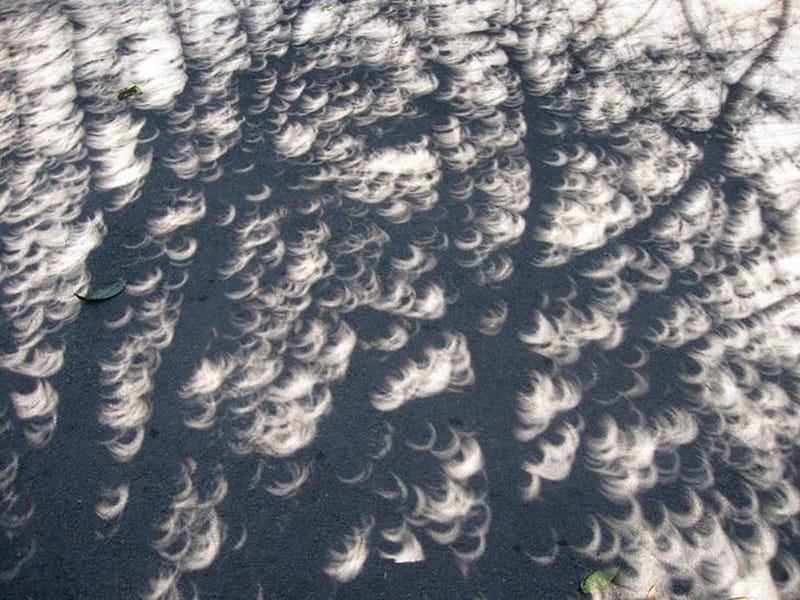
6.) During the partial eclipse, create and look for bizarre shadow effects. If you ever noticed sunlight filtering through the trees, a pinhole, or other small spaces, you may have created bits of light that look like tiny circles. These are actually filtered images of the Sun itself! During a partial eclipse, these will appear as small crescents instead, showing you the part of the Sun that’s peeking out from behind the Moon only. One of the best ways to view this phenomenon with no equipment is to face your back to the Sun, hold your hands over your head, and extend your fingers, with your right hand’s fingers crossing over your left’s at 90 degrees. The shadows that are cast between your fingers, normally showcasing the space between them, will instead show the effects of the Sun being partially blocked by the Moon.
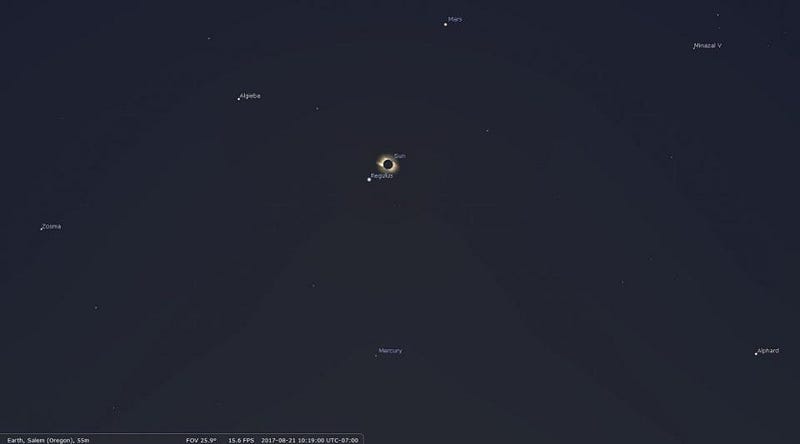
7.) Take off your eclipse glasses during totality and experience the breathtaking views. Even if you get clouded over, you’ll still feel the world plunge into darkness, yet parts of the distant horizon, depending on where you are, will still appear sky-blue in color. Overhead, where the Sun was in the sky, especially if it’s clear, you’ll be able to see:
- the Sun’s corona, an extended mass of ultra-heated gas which goes out more than five million miles into space,
- a very bright star right next to the Sun: Regulus, whose position will be slightly distorted owing to General Relativity,
- and, if you’re lucky, the planets Mars and Mercury, ahead and behind the path of the Sun through the sky, respectively.
https://players.brightcove.net/2097119709001/HkGIdDTwWg_default/index.html?videoId=5097193925001
There will be plenty of other interesting facts about the eclipse for those who view it from space or with scientific goals, such as the fact that the shape of the eclipse’s shadow itself isn’t a sphere, or that the bending of starlight is how we measure the gravitational field and effects of the largest mass in our Solar System. For those experiencing it from the ground, these are the top seven practical things you should do. Be early, be safe, be warm, and as soon as totality comes to an end, put those eclipse glasses back on. Do not view the eclipse with binoculars or a telescope, as even the slightest sliver of direct sunlight through a device like that can cause permanent blindness! If you do it right, the memories and sights you’ll see will be sure to last a lifetime!
Ethan Siegel is the author of Beyond the Galaxy and Treknology. You can pre-order his third book, currently in development: the Encyclopaedia Cosmologica.


